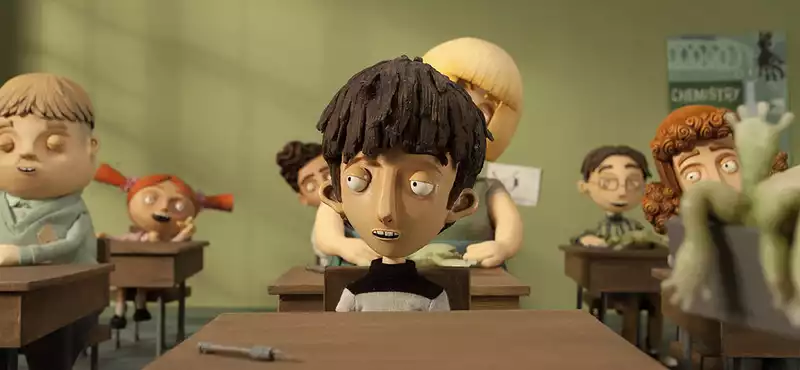Dec 16, 2015
Godlike Process in Cordell Barker If I Was God
What would you do if you were 12 years old and suddenly endowed with god-like powers - use them for good - use them for evil - perhaps a little of both
For a 7th grade boy whose mind began to wander while dissecting frogs in biology class, the possibilities seem endless seem endless.
Cordell Barker. In "If I Were God," Barker explores the difficult threshold between childhood and adolescence. Inspired by a particularly awkward memory of a day in seventh grade, Barker utilizes a variety of animation techniques, from traditional animation to stop-motion puppets, to create a darkly whimsical stop-motion animated short that feels organic and handmade He created the film. But how did Barker come up with the film's distinctive visual approach? ...... In a subsequent piece, Barker describes the technical challenges of bringing his vision to the screen.
The film was a major departure from my usual rustic hand-drawn animation style. I wanted to make the film in 3-D stereoscopic so that the viewer could play with objects with depth, like a school diorama. The perfect medium to achieve this kind of surrealism was stop-motion animation. What made this technique so appealing to me was that I would have to work with other people.
My major concern, however, was whether I could communicate my very specific animation timing to the stop-motion crew, Dale Hayward and Sylvie Truve. Knowing how unforgiving stop-motion animation can be, I did not want to make them redo parts of the film if it could be avoided.
But since I needed pre-visualization for the stop-motion crew, my next odd idea was to shoot myself in front of a green screen in various positions for all the characters and composite everything in Adobe After Effects. It would have been fun to make and silly to watch, but compositing live-action myself into the timing that would fit the timing guide would have been a nightmare. I could have changed the overall timing of the character's actions, but not the timing of specific elements such as arm movements or facial expressions. Click on the link to see how fantastically wrong I was in thinking of this approach.
I went back to Maya and CGI, but this time I only needed what I had already learned. It was enough to create an accurate classroom set, create non-animated primitives for the placement of the children and teacher, calculate all the camera angles and fields of view, and know how many animated characters I would see in each shot once I created the CGI framing guide, I converted the Maya stills to line art. I then created a cropped animated puppet that could be manipulated in Adobe After Effects. This was a very useful method, as it allowed me to notice for the first time if a particular shot was timed correctly when editing the full assembly of the cropped animated scene. Without this pre-visualization method, some of the final puppet stop-motion shots would have undoubtedly not fit the flow of the action that we wanted to create in the full assembly, even though they may have looked well animated when viewed in isolation. In the end, animating the entire film as a cut-out animation gave us the confidence that we could achieve a stop-motion film. This was not out of a lack of confidence in the stop-motion team, but rather out of fear of unintentionally torturing them with reshoots.
I did some of the stop motion myself. I did the imagination sequences. I had never done stop motion before, and since that scene came from my 12-year-old imagination, I felt I could execute it all in a very rustic style. I was able to hold myself to a lower standard than what was expected of me by the crew. It's unfair.
The film ended up being animated in five different ways. The main body of the film (the children and teachers in the classroom) was animated by my staff with traditional puppets using ball and socket armatures. The animation is a hybrid of clay animation, 2D drawn animation, paper and papier-mâché animation, and a combination of 2D drawn animation and stop-motion animation. The drawn and colored frames of animation were printed on card, glued together, and turned over with a stop-motion card-turning rig I designed and built for the inside of the main character's head. Keeping track of it all certainly made the process less tedious.
A great example of the animator's attention to detail is the delicate and beautiful rain effect created by Sylvie Trouvet. When the rain hits the window behind Lily, the character in the frame, all eyes are on her. But this rain is not a special effect; the raindrops are actually drops of glycerin, and given that they are manipulated frame by frame with tiny pins and tiny blowfish balls, this is an animation crew.
.



Post your comment